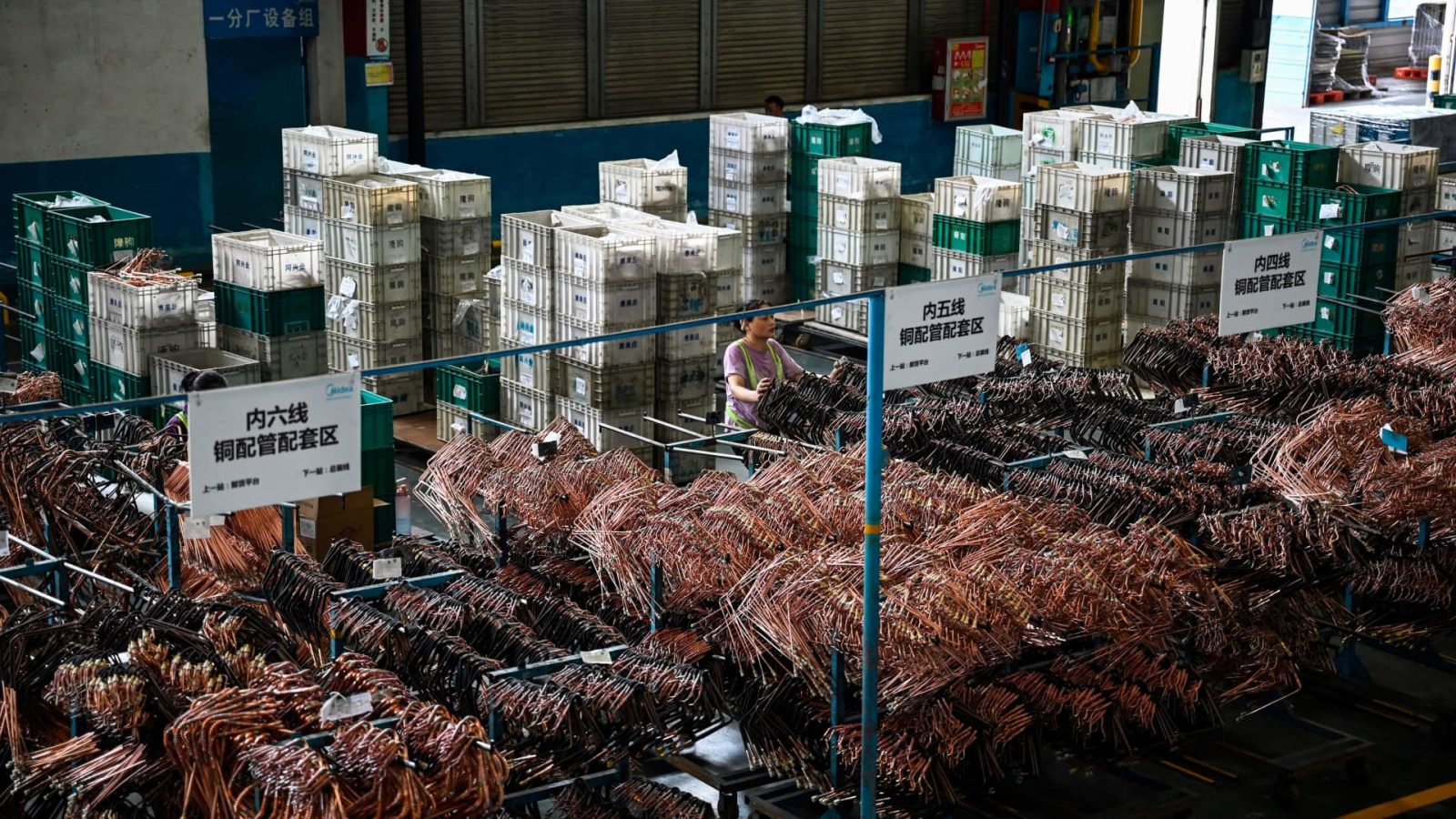An issue that’s frequently come up in my five years in China is how hard it is for many businesses to get a loan. That’s partly because the big banks are state-owned and have preferred to lend to fellow state-owned enterprises. The local system for assessing creditworthiness is also still developing. While financing conditions for non-state-owned enterprises have improved over the years, one adage hasn’t changed: Banks will stick to policy directives. After Beijing cracked down on real estate developers’ high debt levels, banks and other financial institutions drastically pulled back on lending to those companies. Meanwhile, China’s latest development plans have emphasized advanced manufacturing — production of goods of higher value than apparel and other lower-cost goods Chinese factories have been known for. The value of loans to manufacturing companies surged by 38% from a year ago as of the end of September, the People’s Bank of China said Friday. That’s faster than overall loan growth, the PBoC said. It also noted growth in loans to developers. This year the government has been trying to ease pressure on the slumping property sector. While investment into real estate has fallen this year, data for the year through August showed a pickup in investment into manufacturing. Industrial production for the month saw better-than-expected growth, with steady growth in subsectors such as equipment and advanced manufacturing. But analysts increasingly realize that the high-growth days of real estate are over, weighing further o n the economy in the near term. The sector beating the slowdown The academic question remains whether China can break out of low-wage stagnation — the so-called middle income trap. “Micro-level shifts in China, specifically towards higher-value manufacturing and greener and high-tech investments, offer some evidence of the kind of prerequisite transformations that Gill and Kharas outlined” for escaping the middle income trap, Oxford Economics Lead Economist Louise Loo said in a report Friday, referring to the original researchers who coined the term. According to Loo, those three prerequisites are: Specialization in production and employment, an increase in innovation, and education systems that allow the labor force to adjust to new technologies. “China still needs investment to upgrade its manufacturing technology, and will channel more resources towards growth areas such as renewables and green technology,” Loo said. That’s not enough to offset a steeper slowdown in China’s growth, however. Oxford Economics expects the economy to slow to a 4.4% pace in 2024 and 4.0% in 2025, dragged down by real estate. Brian Tycangco, analyst at Stansberry Research, isn’t seeing much optimism about the Chinese economy right now, either. “Essentially, Beijing’s efforts to support the economy have only managed to keep things from becoming a lot worse instead of getting a lot better,” he said. China is set to release third-quarter GDP, retail sales, industrial production and fixed asset investment on Wed., Oct. 18. But in markets, some stocks may be oversold, HSBC analysts said of a few of its buy-rated names in a recent report. Three of the oversold names, all listed in in mainland China, fall into the broad advanced manufacturing trend. Sungrow Power — the renewable energy company claims to have the world’s largest factory for solar inverters, the tech that converts solar power into useable electricity. HSBC has a price target of 147.00 yuan, for a nearly 70% upside from Friday’s close Midea — the home appliance giant was selected by the World Economic Forum as part of its “Global Lighthouse Network,” a group of companies integrating automation and artificial intelligence to improve efficiency. The forum considers such tech part of the so-called fourth industrial revolution. HSBC has a price target of 70.00 yuan, for upside of 27% from Friday’s close Yonyou — the enterprise software company sells management systems, including for manufacturing. HSBC has a price target of 30.50 yuan, for upside of nearly 80% from Friday’s close. Wind Information, the primary financial database in China, has a “Fourth Industrial Revolution Index” of mainland China-listed stocks — a basket that’s up by more than 20% so far this year.
Read the full article here












Leave a Reply